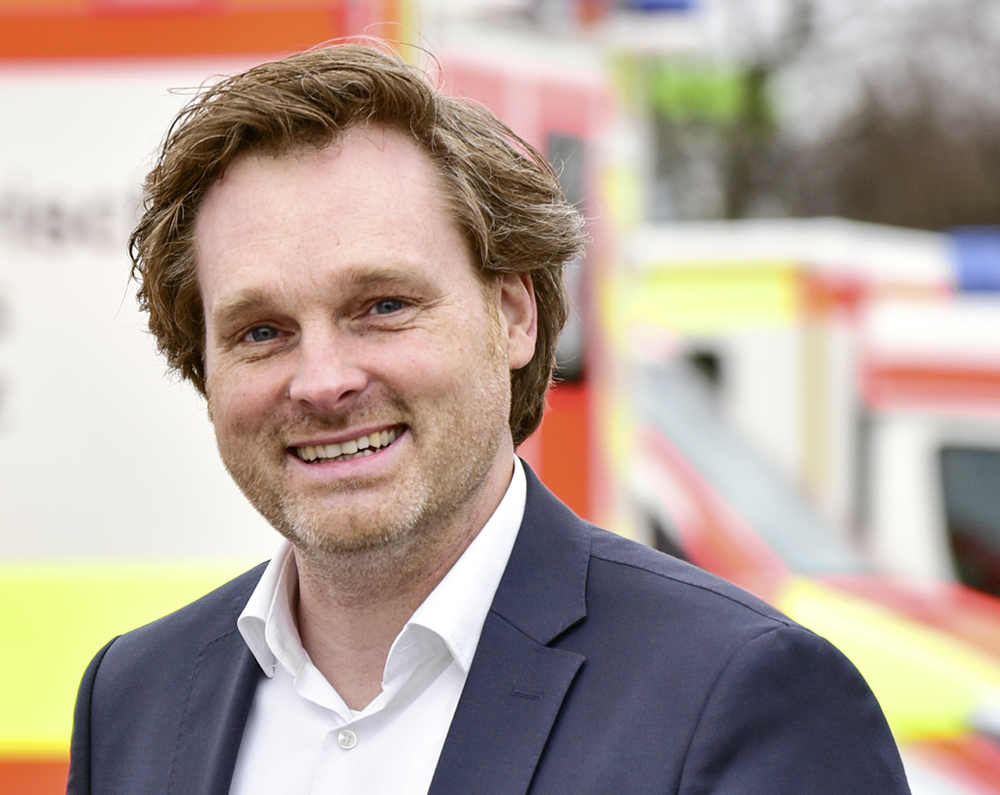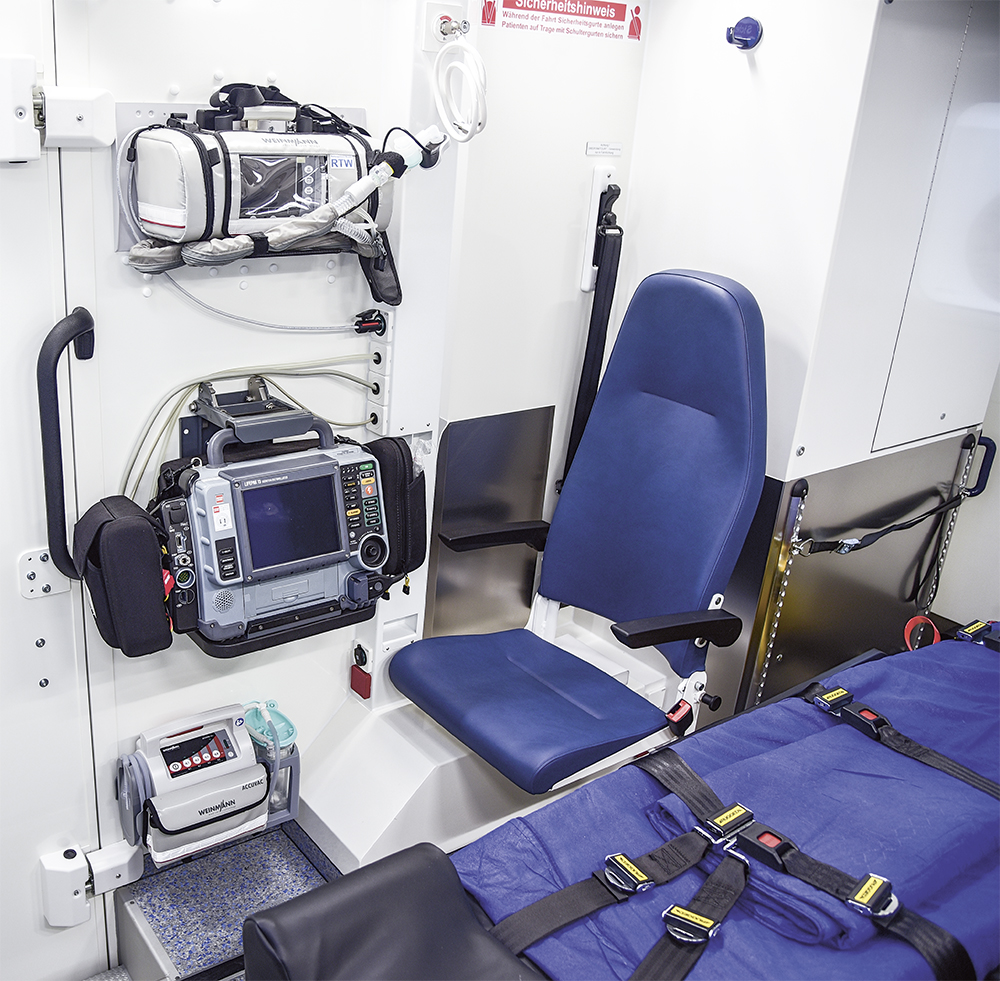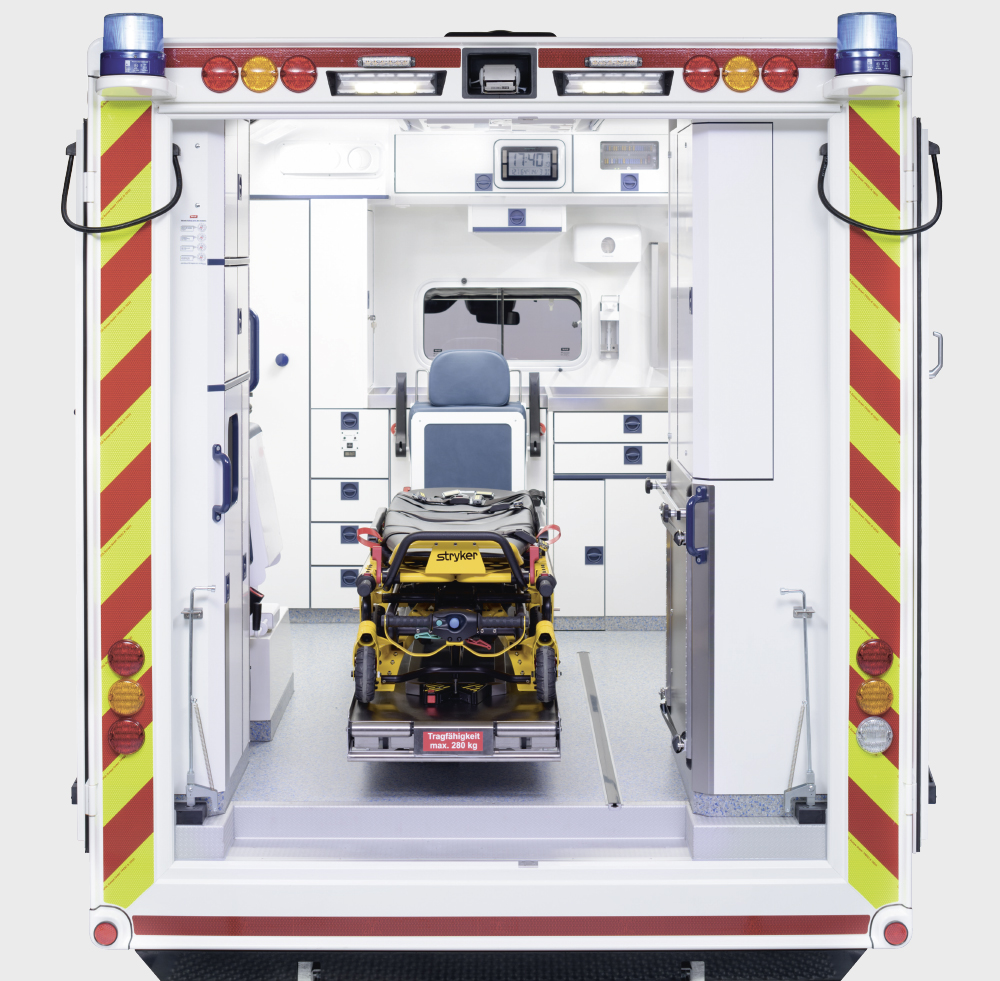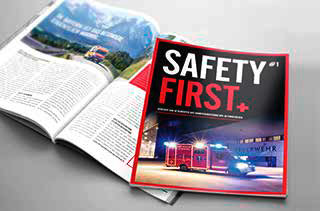


Ulrich Lübke is the commercial director for the regional headquarters of the BRK. He was born in Kiel and, after training as an industrial manager, he studied business administration and was then employed by Siemens for several years in China, amongst other things. In 2007 Ulrich Lübke joined the BRK and took on responsibility for managing strategic purchasing. In his role as commercial director, since 2014 he has also been responsible for the areas of finance and controlling, personnel management and IT services.

Or can they? At any rate, 15 years ago this is exactly the challenge which the Bavarian Red Cross (BRK) set themselves by implementing a standardised ambulance design across the entire region: a total of around 500 ambulances were all procured centrally by the BRK for the next four years for the BRK itself, the Samaritan Federation (Arbeiter-Samariter Bund), the fire department for the regional capital Munich, the Johanniter and Malteser emergency services and for integrated private companies. A truly extraordinary proposition when you consider that across Germany, within a single ambulance station the vehicles sometimes look completely different inside. It is by no means trivial to construct an ambulance which meets all requirements from Aschaffenburg to Bad Reichenhall and from Lindau to Hof. Numerous opinions must be heard and different stipulations taken into account in order to reach a consensus. To start with there is the requirements specification, which must be agreed in a working group across all the organisations. In addition, important real-world feedback from emergency personnel must be incorporated into the ongoing development of the vehicle design. One of the people tasked with managing this complex procurement process is Ulrich Lübke, commercial director for the regional headquarters of the BRK. We asked him why so much effort was made to make one highly specific ambulance the standard on the streets of southern Germany.

Someone who is ordering this many identically equipped vehicles is hoping to obtain benefits which go beyond optimum expansion. The cost benefits in terms of assembly line production are obvious, but the continuous acquisition of identical vehicles also results in greater security and better response capabilities.
Due to the limited number of backup vehicles in the Bavarian emergency services, it is crucial that any vehicle failures are kept as brief as possible. Consequently, an intelligent approach to maintenance and servicing is absolutely critical. Thanks to the permanent availability of standardised vehicles, in the event of a total vehicle write-off, a Bavarian ambulance can be replaced within four to eight weeks. Ordinarily individual procurements like this would take at least six to nine months from ordering the vehicle chassis to delivery of the finished emergency vehicle.
The safety aspect is also notable when it comes to working procedures for emergency staff. The standardised fixtures and fittings enable emergency personnel to operate just as effectively in one ambulance as in another. They don’t find themselves at the critical moment reaching in the wrong location for the oxygen cylinder emergency backpack etc. Identical vehicles also mean greater ownership and lower stress for the people who rely on them for their work.
More than sufficient justification for the labour-intensive progress of central procurement; a process which, by the way, is already starting over again. Security remains the central element in planning. Here the BRK sees further scope for improvements. For example, in the use of electrohydraulic stretchers and loading systems which will make work less back-breaking for emergency staff. Always have an eye on the very latest technology, goes the saying. “In the end we are constantly engaged in a balancing act between requirements and affordability”, says Ulrich Lübke. “It’s impossible for all desirable items to be covered by the funding agencies.” In this case the high quantities are a disadvantage: what might just about be feasible for one individual ambulance, results in costs going into the millions when you are looking at 500 vehicles, whatever economies of scale you might be able to realise.
Product developers at the BRK take the view that a design is never complete, according to Lübke, and nor should it ever be. “Standing still would be a retrograde step.” That’s why work is already underway today on the special features for the next-generation “Bavarian ambulance” for 2021. In Bavaria that is totally normal.

This text was first published in the WAS customer magazine „Safety First“. You can request a free copy of this and many other interesting topics by sending an e-mail to marketing@was-vehicles.com.





